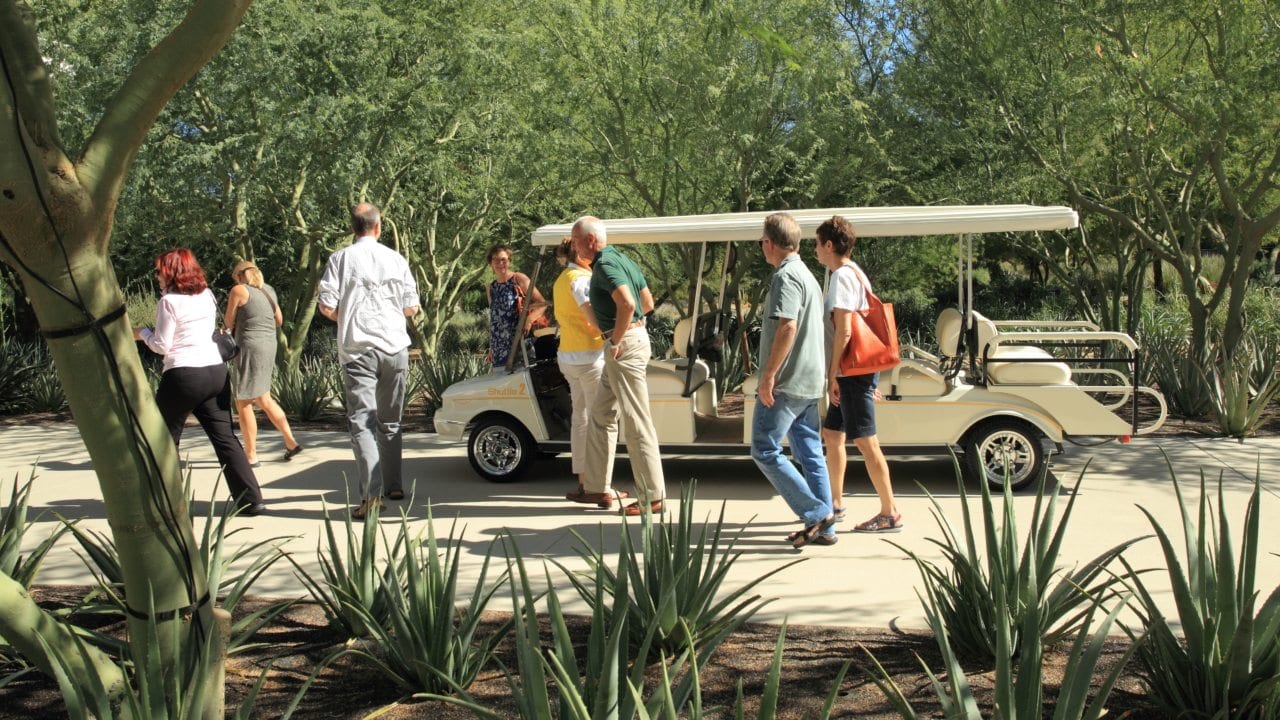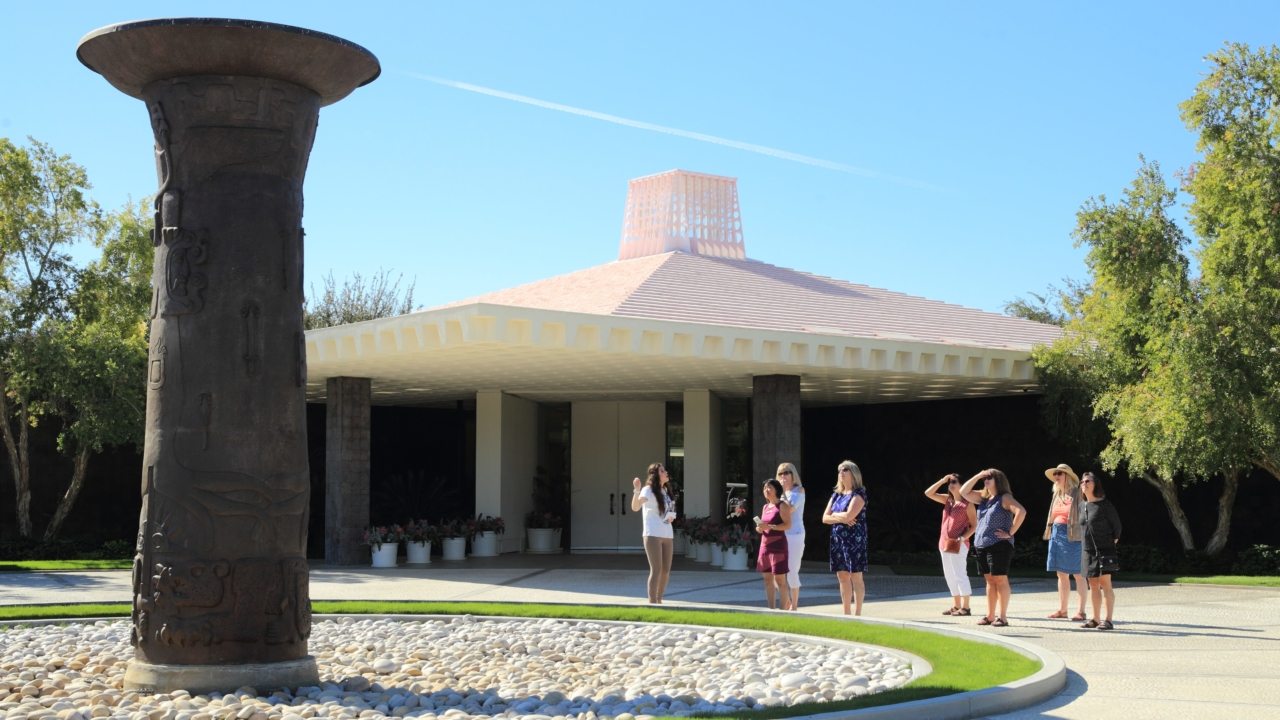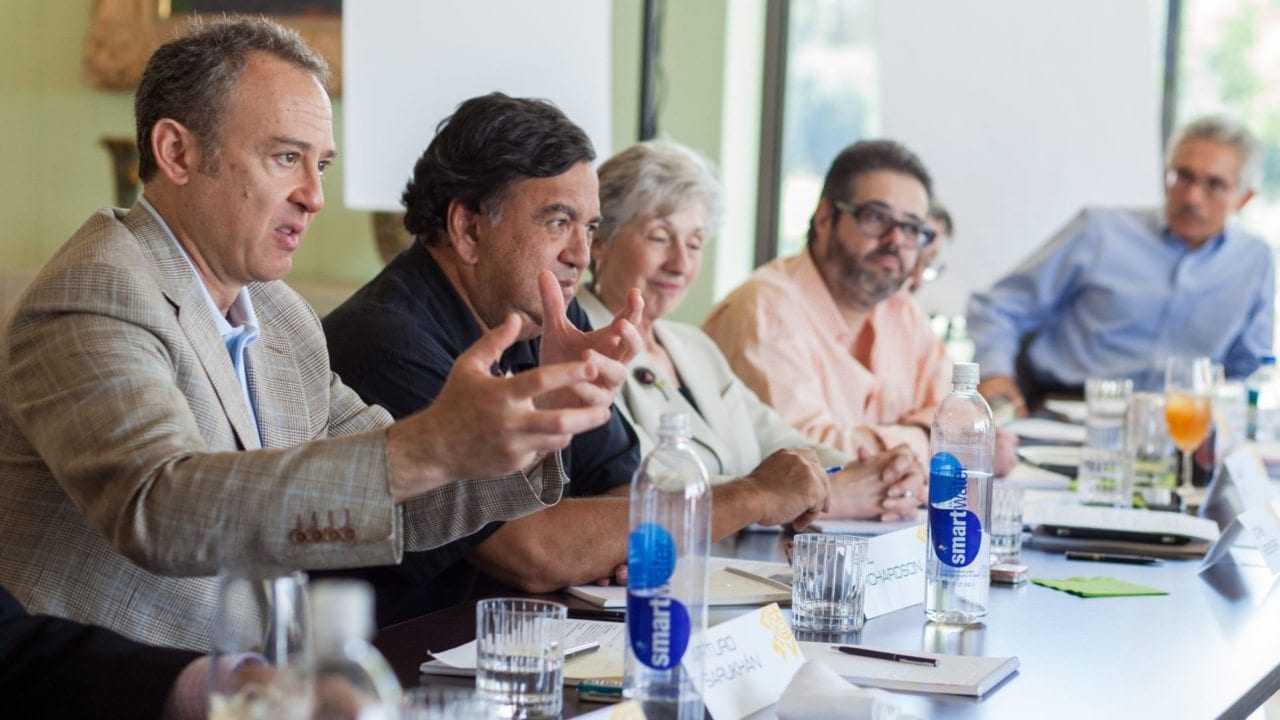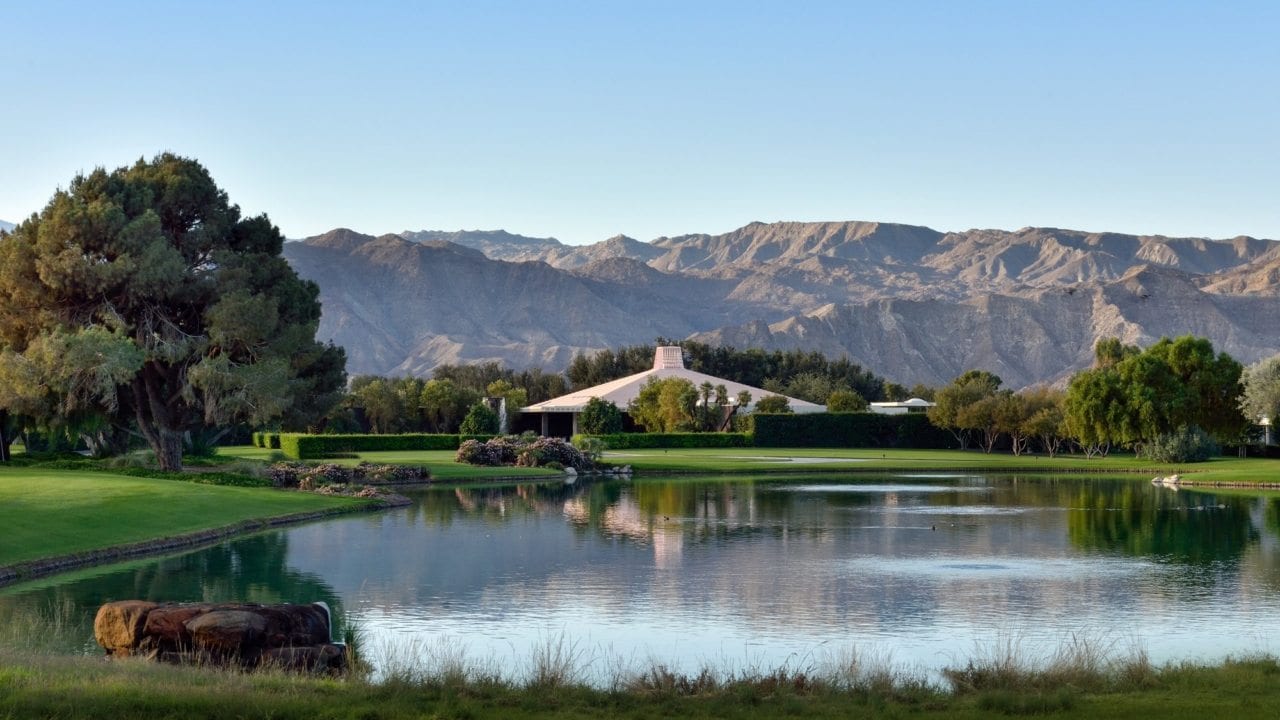Ofrendas (altars) organizations:
- Animal Samaritans
- Children’s Discovery Museum of the Desert
- Coachella Valley Certified Farmers’ Market
- Lift to Rise
- Palm Springs Art Museum
- Palm Springs Cemetery District
- Raices Cultura
- S.C.R.A.P. Gallery
Calaveras (giant skulls) artists:
- Her Excellency by Noelani Vargas
- Alebrijes by Monserrath Zamora
Nichos (shadow boxes) artists:
- Mi Templo by Bennie Alvarez. Indio, CA. @tbennieart
- Amor Eterno by Daisy Baez. Thousand Palms, CA. @creepylilthing
- Roses are Dead by Jack Ryan Garcia. Cathedral City, CA. Simbulan1@gmail.com
- Into the Void by Kylie Knight. Palm Springs, CA. @greasextrap
- Mictlān by Frank Lemus. La Quinta, CA. @lemus_frank
- Untitled (Xolotl) by Clara Nieblas. Coachella, CA. @elotepreparado
- Resistencia by Amarah Orantes & Tania Orozco. La Quinta, CA. @brainw3rmz
- Ode to Fight Clouds by Tone Rubio. Indio, CA. @artisttone
Walter and Leonore Annenberg were prolific collectors of fine and decorative art. They consistently sought best-in-class examples across their broad areas of interest. The interior design at Sunnylands reveals a joyful interplay of their carefully chosen masterworks and tabletop bibelots. They not only collected together, they thoughtfully placed each work of art until they were satisfied that they had found the perfect location for each.
Fine artworks on view at Sunnylands Center & Gardens and in the historic home include works by Auguste Rodin, Jean Arp, Yaacov Agam, Pablo Picasso, Etienne Hajdu, and Alberto Giacometti.
Decorative objects include works by Tiffany & Co., Lalique, Meissen Porcelain, Boucheron, Boehm Porcelain, and Steuben glass. Assembling an important Chinese ceramic, stone, and metalwork collection was among their favorite collecting activates. These works span the Tang dynasty to the Republic of China era and include cloisonné figures and furniture, sancai-glazed funerary figures, jade and jadeite figures, and export porcelain. Other tabletop objects include selections of Georg Jensen tableware and royal pedigree English silver-gilt.
They also dotted their 200 acres of lush grounds with a variety of compelling monuments inspired by their travels, including a totem pole by renowned Kwakiutl carver Henry Hunt; a bronze fountain by the Chávez Morado brothers inspired by the one on view at the National Museum of Anthropology in Mexico City; and an abstract avian sculpture by Canadian artist Art Price, Birds of Welcome.
The Chávez Morado brothers were a part of the elite group of artists who worked alongside the modern architects who reshaped Mexico City before the 1968 Olympics. They came to prominence during an era immediately following the Mexican muralist movement made famous by Diego Rivera, José Clemente Orozco and David Alfaro Siqueiros. These earlier muralists solidified a post-revolutionary art aesthetic that broadcast messages of peace and unification.
José Chávez Morado (1909-2002) is the most famous muralist in the second wave of the Mexican muralist movement (1940s – 1970s). Three of his murals adorn the walls of the Universidad Nacional Autónoma de México (UNAM) in Mexico City.
Tomás Chávez Morado (1914-2001) produced nationally recognized civic work. Perhaps the most famous of these are the 260 monumental concrete eagle heads, commissioned in 1960, that mark the 715-mile “Grito de Dolores” route of Don Miguel Hidalgo from what is now Dolores Hidalgo in Guanajuato to Monte de las Cruces in Chihuahua.
While the artistry of José and Tomás Chávez Morado is well-known throughout Mexico, Carved Narrative marks the first time that their individual and collaborative works are being jointly displayed outside their homeland. The exhibition features 16 paintings by José and 21 sculptures by Tomás. Their work reflects themes common in the art vocabulary of their country after the Mexican Revolution (1910-1920), such as the depiction of indigenous people and their fusion with the descendants of their Spanish conquerors. The pieces are on loan from Tomás’ daughter, Adriana Marcela Chávez Anguiano, and the Instituto Estatal de la Cultura de Guanajuato.
Carved Narrative is part of Pacific Standard Time: LA/LA, a far-reaching and ambitious exploration of Latin American and Latino art in dialogue with Los Angeles taking place from September 2017 through January 2018 at more than 70 cultural institutions in Southern California. Pacific Standard Time is an initiative of the Getty. The presenting sponsor is Bank of America. Sunnylands’ Carved Narrative exhibition will remain on display until June 3, 2018.
On a trip to Mexico City in 1967, Walter and Leonore Annenberg encountered the monumental 40-foot bronze fountain on the central patio of the Museo Nacional de Antropología. The column, with its carved relief depicting the history of Mexico from the ancient past to the twentieth century, captivated the Annenbergs and aligned with Sunnylands’ pre-Hispanic aesthetic. The couple commissioned a half-scale version of the column for Sunnylands from museum architect Pedro Ramírez Vázquez. To create the new column, Vázquez engaged the same artists who created the museum’s column: José (1909-2002) and Tomás (1914-2001) Chávez Morado of Guanajuato, Mexico.
The Chávez Morado brothers were part of an elite group of artists working alongside the blue-chip modern architects who were reshaping Mexico City before the 1968 Olympics. Their architectural work (such as the column known throughout the world as El Paraguas at the National Museum) is prominent in Mexico City and throughout Mexico. El Paraguas (1964) is regarded by Mexicans in the same way the French view the Eiffel Tower.
The column at Sunnylands, known as the Mexican Column, contains carvings identical to those on the column in Mexico City. The images telegraph a message of unity and depict the proud Mexican people as an equal fusion of Spanish and indigenous ancestry. The Mexican Column was placed in the front entryway of Sunnylands in 1968. In an interview, Walter Annenberg spoke of its important sociopolitical message and of his desire to have the column because it told the history of the Mexican people.
Carved Narrative will be the first exhibition outside Mexico to explore both the collaborative work and individual studio paintings and sculpture of the Chávez Morado brothers. The show features sixteen paintings by José and twenty-one sculptures by Tomás at Sunnylands Center & Gardens.
THE CHÁVEZ MORADO BROTHERS
The Chávez Morado brothers worked during an era immediately following the Mexican muralist movement made famous by Diego Rivera, José Clemente Orozco and David Alfaro Siqueiros. These earlier murals solidified a Mexican art aesthetic born of a government-sponsored public art program following the Mexican revolution (1910-1920) that enlisted respected artists to broadcast a message of peace and unification.
• José Chávez Morado is the most famous muralist in the second wave of the Mexican muralist movement (1940s –1970s). Three of his murals adorn the walls of the Universidad Nacional Autónoma de México (UNAM) in Mexico City.
• Tomás Chávez Morado produced nationally recognized civic work, including the 1960 commission of 260 monumental concrete eagle heads that mark the 715-mile route of Miguel Hidalgo from Dolores Hidalgo in Guanajuato to Monte de las Cruces in Chihuahua.
Carved Narrative is part of Pacific Standard Time: LA/LA, a far-reaching and ambitious exploration of Latin American and Latino art in dialogue with Los Angeles. Supported by grants from the Getty Foundation, Pacific Standard Time: LA/LA takes place from September 2017 through January 2018 at more than 70 cultural institutions across Southern California, from Los Angeles to Palm Springs and from San Diego to Santa Barbara. Pacific Standard Time is an initiative of the Getty. The presenting sponsor is Bank of America.
During their lifetimes, the Annenbergs assembled one of the most significant private collections of French Impressionist and Post-Impressionist paintings in the world. Starting in 1954 with the purchase of Vincent van Gogh’s Les Oliviers, St.-Remy (1889), the Annenbergs spent 40 years collecting masterpieces by Renoir, Monet, Van Gogh, Matisse, Picasso, and others. In 1991, they donated the 53-painting collection to the Metropolitan Museum of Art in New York City, ensuring the paintings would remain together and be on view for the public to enjoy.
Following the transfer of the collection in 2002, Leonore Annenberg worked closely with the museum staff to create vibrant, full-scale digital reproductions of the paintings and recreated carved duplicates of the original ornate frames for installation at Sunnylands. These reproductions were installed at Sunnylands to forever communicate how significant a role the paintings played in the lives of the donors and the impact they had on the design of the house.
What do you get the man or woman who has everything? The question was not a theoretical one for the U.S. presidents, royal families and Hollywood legends who visited Walter and Leonore Annenberg at Sunnylands. Over the decades, the couple, recognized as two of the 20th century’s greatest philanthropists, were themselves the recipients of countless personal gifts – some lavish, some light-hearted and sentimental – from the world-famous figures they entertained at their home.
Treasures at Sunnylands: Selections from the Gift Collection of Walter & Leonore Annenberg, featured 46 items reflecting both the generosity and the whimsy of the Annenbergs’ guests, family, and close friends.
From a silver cigarette box presented by Queen Elizabeth, the Queen Mother, to a singing fish plaque from President George H. W. Bush, gifts in the exhibition were categorized into offerings of presidents and first ladies, royalty, diplomats, business leaders, entertainers, and family. Featured items included a beaded, safety-pin necklace from then-First Lady Hillary Clinton that became a prized piece of jewelry for Leonore Annenberg and the family’s Austin Mini Moke – a small, freewheeling vehicle that a fun-loving Frank Sinatra delivered in 1968.
Other items in the exhibition, all from the Sunnylands Collection, were given by such notables as entertainers Bob Hope and Kirk Douglas; U.S. Senator Dianne Feinstein and former British prime minister Margaret Thatcher; royals Prince Charles and Queen Elizabeth II; and business leaders Randolph Hearst, with wife Veronica, and Justin Dart, with wife Jane.
The exhibition catalog is available in the Sunnylands shop for $25 and may be ordered online.
Walter and Leonore Annenberg left an outstanding collection of sculpture at Sunnylands. Visitors to the Center & Gardens can enjoy several of these works, including ones by Alberto Giacometti, Auguste Rodin, and Étienne Hajdúania.
In 1976 Walter Annenberg wrote, “Ultimately, Sunnylands will be turned over to the public and I naturally take care in the selection of acquisitions for this long-range responsibility.”
As part of this vision, some items from the collection are installed at the Center for public viewing and education. Included are significant works of sculpture dating primarily from the 20th century.
A collaboration between the US State Department, the Steuben Glass company, and artists from nations in Asia and the Middle East became a diplomatic and public relations success in the 1950s as the United States engaged in a program of cultural diplomacy. Asian Artists in Crystal, a set of 36 glass objects made by Steuben and engraved with designs submitted by artists from 16 countries, might also have been the first international museum blockbuster, pre-dating by 20 years the Treasures of Tutankhamun, considered the museum exhibition that ushered in the era of blockbuster shows.
The entire series, purchased by Walter and Leonore Annenberg in 1971 for their home in Rancho Mirage, will be on exhibition at Sunnylands Center & Gardens from January 28, 2016, through May 28, 2017. This is the first time the collection has left the house since it was installed there in a William Haines-designed custom gallery more than 40 years ago. Asian Artists in Crystal: Steuben Glass at Sunnylands features the only known complete collection of the series. The 36 crystal works will be exhibited with photographic reproductions of a selection of the original drawings, which are held by the New York Public Library.
The Sunnylands exhibition was planned to mark the 60th anniversary of the opening of the exhibition at the National Gallery in January 1956. According to Janice Lyle, director of Sunnylands Center & Gardens, “It focuses attention on the use of art and culture for diplomatic purposes, something the Annenbergs promoted throughout their lives together.” Among many other accomplishments in this area, Leonore Annenberg was one of the founders of the Foundation for Art in Embassies Program (FAPE), which provides permanent works of American art to embassies across the world.
Following World War II, the world was philosophically divided between the free-market capitalism of the United States and the increasing strength of Communism as embodied by the USSR. The two countries had emerged as competing powerful nations. As the world entered a “cold war” era, the United States began a systematic effort to burnish its reputation and solicit friendships among countries in the Far East. Among the diplomatic methods used was this unique cultural exchange, resulting in the collection Asian Artists in Crystal.
The diplomatic effort paired Asian artists with master engravers and glassmakers at Steuben. The results were then exhibited at two of the most prestigious art museums in the United States—the National Gallery in Washington, DC, and the Metropolitan Museum in New York. The entire series then toured throughout Asia and the Middle East from 1956 to 1958, during which time more than 490,000 people—from school children to presidents and royalty—were introduced, perhaps for the first time, to the United States. This ambitious undertaking, with the State Department as a partner, provided a way to open dialogue, build allies, and strengthen influence in countries that were unfamiliar with, curious about, and even ill-informed about the United States.
Glass scholar William Warmus described the exhibition’s 1956 preview opening in Washington, DC, as “spectacular,” and noted that Mary Jean Madigan’s definitive book on Steuben said the collection is “without question … the crowning achievement of Steuben’s postwar history.”
The collaboration between Asian artists and the American artisans resulted in graceful and elaborate glass vessels, bowls, and monuments on which are engraved drawings depicting Buddhist, Hindu, and Muslim culture; scenes from holidays and celebrations; and daily life and mythical creatures. The objects’ shapes, bases, and tops echo the engraved scenes and designs showing musicians, dancers, farmers, and fishermen; cypress trees and lotus flowers; elephants, dragons, and pagodas. As Warmus writes in the exhibition catalog, “Creating masterpieces together became an appealing part of this project: the business executive, curator, artist, designer, glassblower, and engraver all had to contribute something special for the project to succeed.”
Three Steuben designers created the shapes on which drawings from 36 artists are engraved. Some of their insights on the design process are reported by Warmus. For example: The vessel design for New Year in Formosa by Ran In-ting “emphasize[s] a carefree and hilarious celebration.” For Burmese Royalty by U Ohn Lwin, the blank was “inspired by the Great Pagoda of Rangoon.” The lotus flower, a symbol for Buddha, is seen as a design element in the glass base of The Goddess Tara by L.T.P. Manjusri, who draws the goddess standing on a lotus flower.



